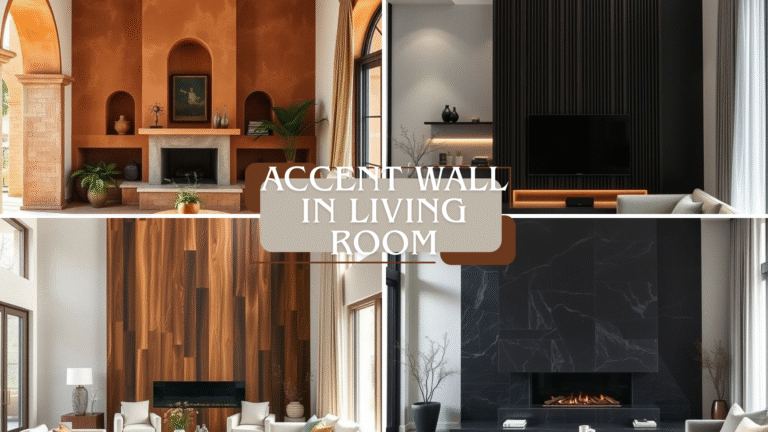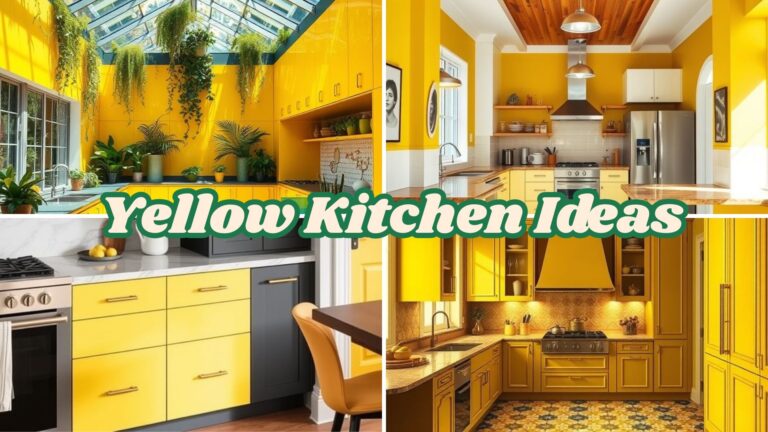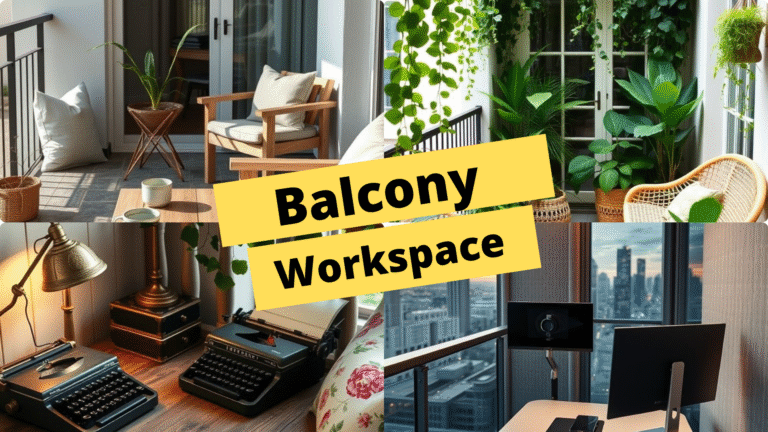Minimalist Living Room Ideas for Calm & Simple Spaces
I’ve always believed that a living room doesn’t have to be loud to leave an impression. Over the years, I’ve come across spaces that don’t shout for attention—but whisper peace, stillness, and balance. Minimalism, when done right, makes room for calm. It strips the unnecessary, keeps the essential, and lets light and texture do the talking. Whether it’s the warmth of natural wood or the hush of white walls, these living rooms tell their stories without clutter.
Each of the 20 designs you’re about to see offers a distinct take on minimalism. From floating furniture illusions to matte monochromes, they’ve all been curated with care. These aren’t just rooms—they’re reflections of intentional living. And yes, I’ve observed how even the slightest detail in these rooms—from a stone slab to a narrow shadow gap—carries more weight than an entire gallery wall in a noisy space.
Here are the first five minimalist living rooms that stood out for their simplicity, restraint, and clever design.
Bare Wood Modernism
The moment I stepped into this space, the scent of untreated timber hit me. It was raw, yet somehow refined. The walls, floor, and ceiling seemed to breathe the same language—wood. No glossy finishes, no stains—just a celebration of bare, natural grain. It felt like walking into a forest cabin designed by someone who sketches in silence.
There’s no need for loud accents here. A low, linear couch in oatmeal fabric rests quietly in the center, framed by a single coffee table in matte black steel. The windows let in just enough light to highlight the texture of the wood. Nothing is polished; everything is present.
I noticed how the joinery lines up with obsessive precision. Cabinet handles? There are none. It’s all push-to-open—silent like the room itself. The wooden planks run horizontally, elongating the space. The room doesn’t try to impress. It just is. And that’s its strength.
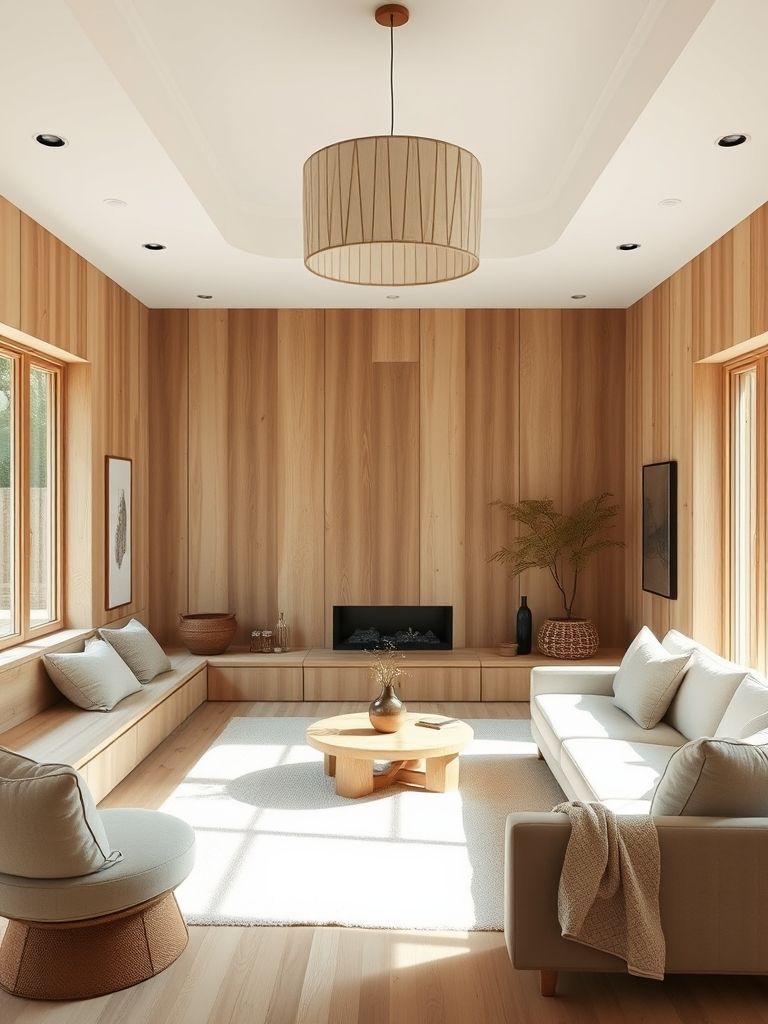
Barely There Beauty
I had to blink twice when I saw this living room. The boundaries between floor, wall, and ceiling were so seamless, they nearly vanished. Everything was pale, from the stone-like floor to the gauzy curtains. But beneath that gentleness was a kind of quiet confidence. The kind of beauty you almost miss—but can’t forget.
Furniture was minimal to the point of being poetic. A translucent acrylic table, almost invisible, stood next to a plush white cloud of a couch. Every element was softened—rounded corners, low heights, and diffused light. Even the shadows looked like they were walking on tiptoes.
It’s the kind of room where you exhale a little deeper. Where silence is not emptiness, but presence. And though it appears weightless, every piece was carefully placed, every inch accounted for. I could almost hear the room breathe.
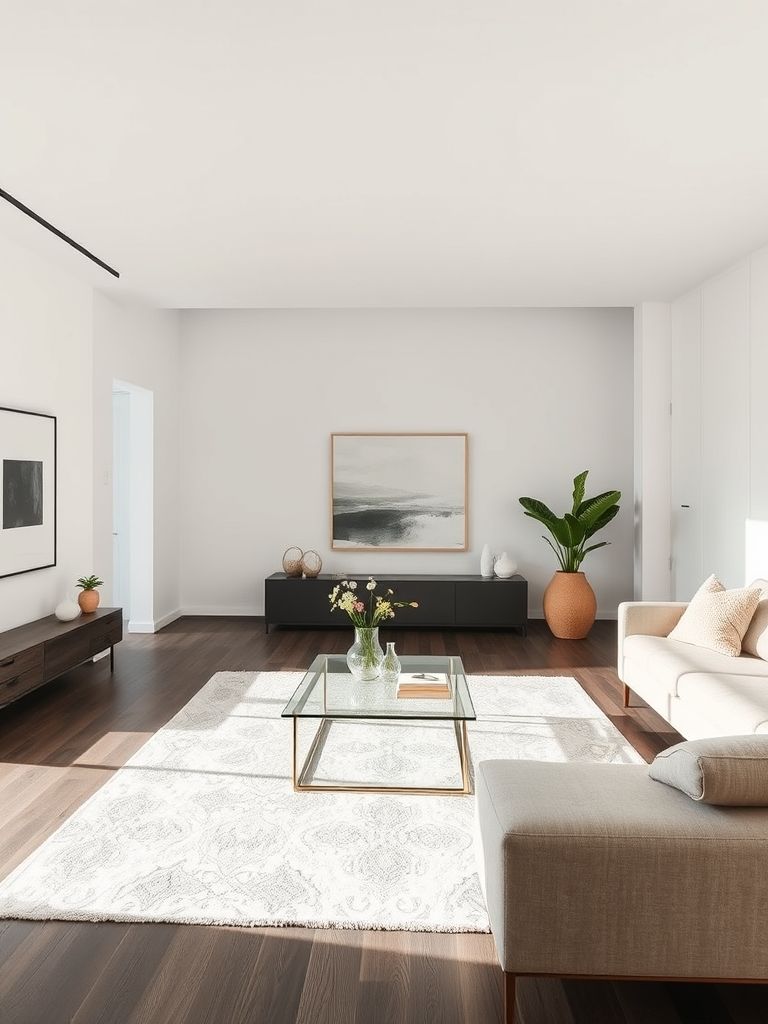
Black & Beige Balance
Walking into this space was like entering a visual equation: light + shadow = balance. The beige walls carried warmth, but it was the black furniture that grounded everything. A modular L-shaped sofa in tan paired with jet-black shelving and minimalist lighting fixtures. It was a lesson in contrast without chaos.
I was drawn to the asymmetry. One side had an open shelf with a sculptural black vase, the other held a large abstract painting in muted tones. And in between it all, the floor—a soft woven rug that blended both black and beige threads—pulled everything together like a whisper.
What I loved most was how nothing stood out, yet nothing disappeared. The black wasn’t too harsh; the beige wasn’t too soft. It felt like a conversation between two old friends—completely different, but always in sync.
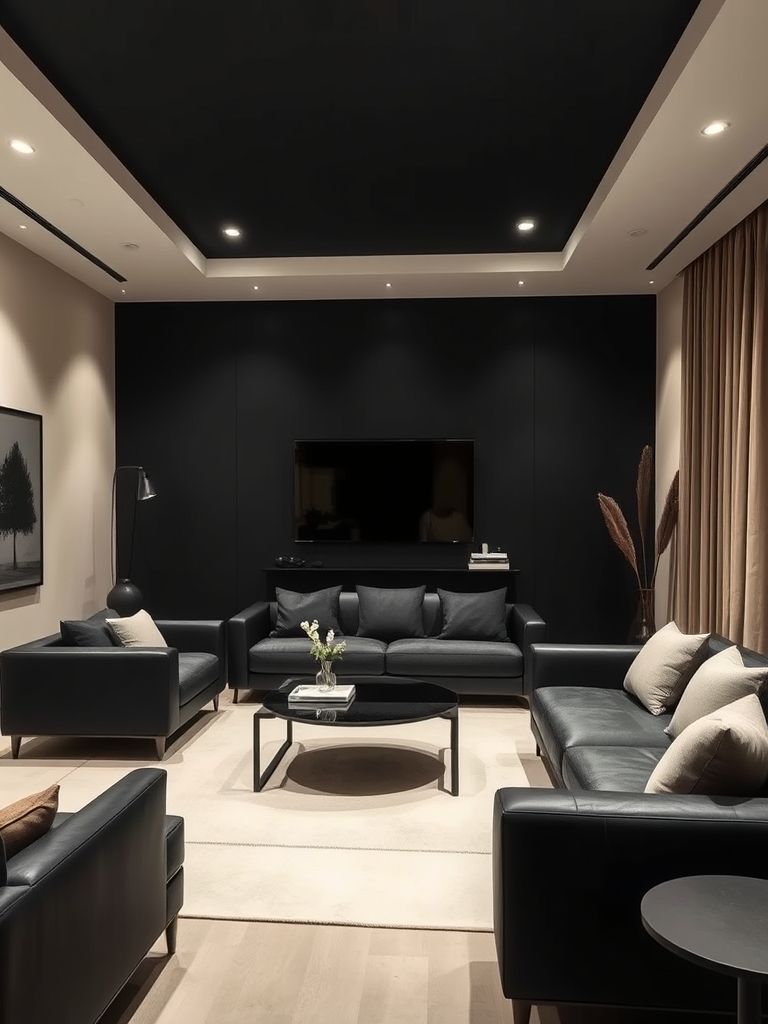
Desert-Inspired Stillness
This room reminded me of quiet desert mornings—the ones where nothing moves but your breath. The color palette drew from sand, clay, and sun-bleached stone. A curved sofa in pale terracotta sat under a wide, frameless skylight. The sunlight came in strong but felt gentle. That’s when I realized: this room was built to slow you down.
The walls had a plaster finish with a grainy texture. They didn’t reflect light—they absorbed it. In the corner stood a lone cactus in a handmade ceramic pot. No art, no TV, no clutter. Just stillness.
Every piece of furniture had round edges, like desert rocks shaped by time. The table was a simple slab of limestone. Even the floor, in muted matte concrete, added to the room’s timeless feel. I sat down and felt like I’d paused time.
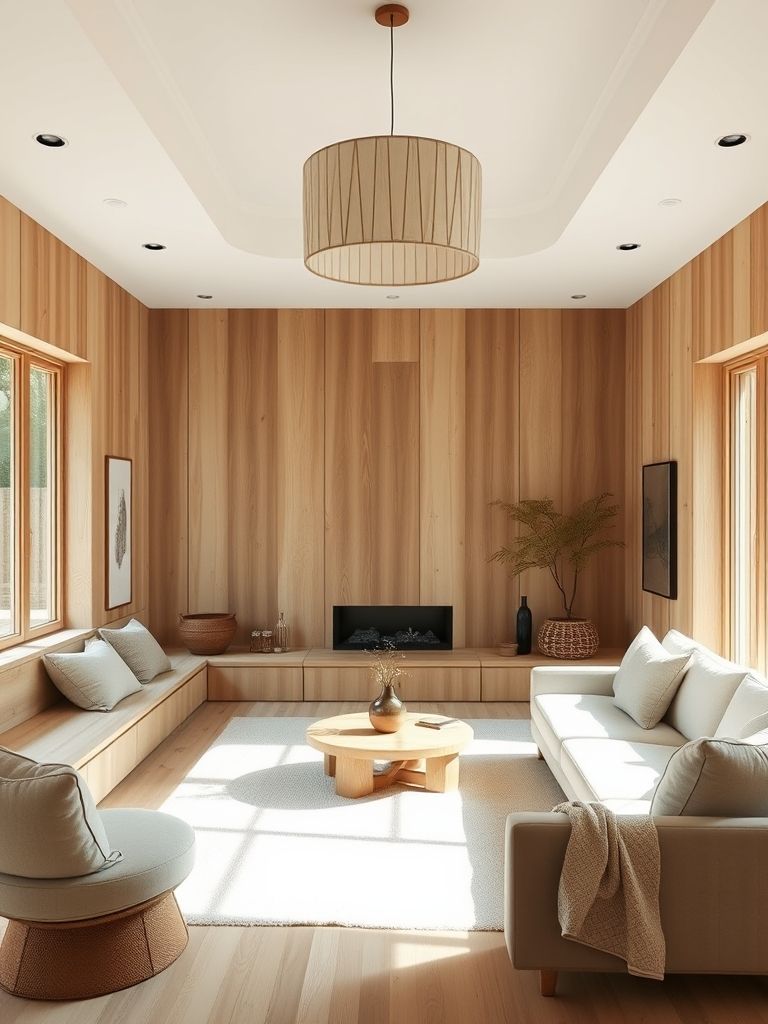
Echoes of Earth
This space didn’t just look earthy—it felt grounded. Clay-toned walls, a stone bench doubling as a console, and soft linen drapes all worked in harmony. You could tell the inspiration came from natural elements—stones, mud, fibers. I touched the wall and felt a gentle grit under my fingertips. It was like nature had a seat at the table.
The couch was a muted olive, low to the ground, inviting you to settle in. Instead of a coffee table, there were three stacked stone blocks, rough-edged and irregular. I loved how nothing matched, yet everything belonged.
It’s a room that invites barefoot living. The kind where you sip tea in silence, or maybe read a line of poetry and close the book just to think about it. Earthy, humble, and honest. That’s how it spoke to me.

Floating Furniture Illusion
The first time I saw this living room, I had to ask, “Wait—how is that couch even supported?” The furniture looked like it was hovering just above the floor. There were no visible legs, no bulky bases—just clean forms suspended in mid-air. It was architectural trickery at its finest, and it made the entire space feel lighter.
The sofa had a narrow plinth base recessed so far back it became invisible. Paired with a clear acrylic side table and wall-mounted floating shelves, the entire room looked like it defied gravity. Even the lighting came from hidden sources—recessed ceiling slits and indirect floor-level LED strips.
This wasn’t just design—it was theater. The illusion of levitation gave the room an expansive quality. It felt open, almost weightless, and unbelievably quiet. Everything floated, and with it, so did the mind.
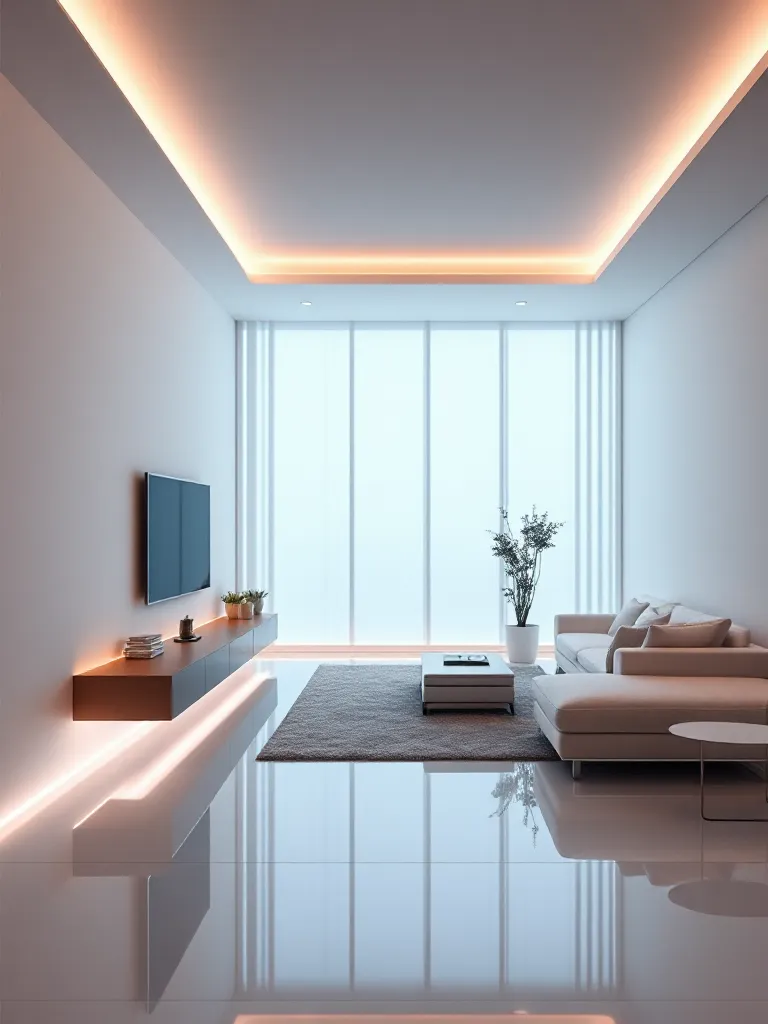
Floating Geometry
If a room could be designed with only a ruler and a vision board, this would be it. Clean, geometric shapes floated in space with surgical precision. A rectangular cream sofa, a round monochrome rug, and square-edge nesting tables—each shape held its own, yet nothing clashed. It was like geometry class, but make it peaceful.
I remember standing in the center and feeling how balanced it all was. No curve was accidental. No angle existed without reason. Even the overhead pendant lights echoed the floor layout, almost like a mirrored grid in 3D.
This living room wasn’t just minimalist—it was mathematical. But it didn’t feel cold. The materials—brushed oak, soft suede, and matte ceramic—kept things grounded. Floating geometry might sound rigid, but in this space, it felt like freedom within structure.
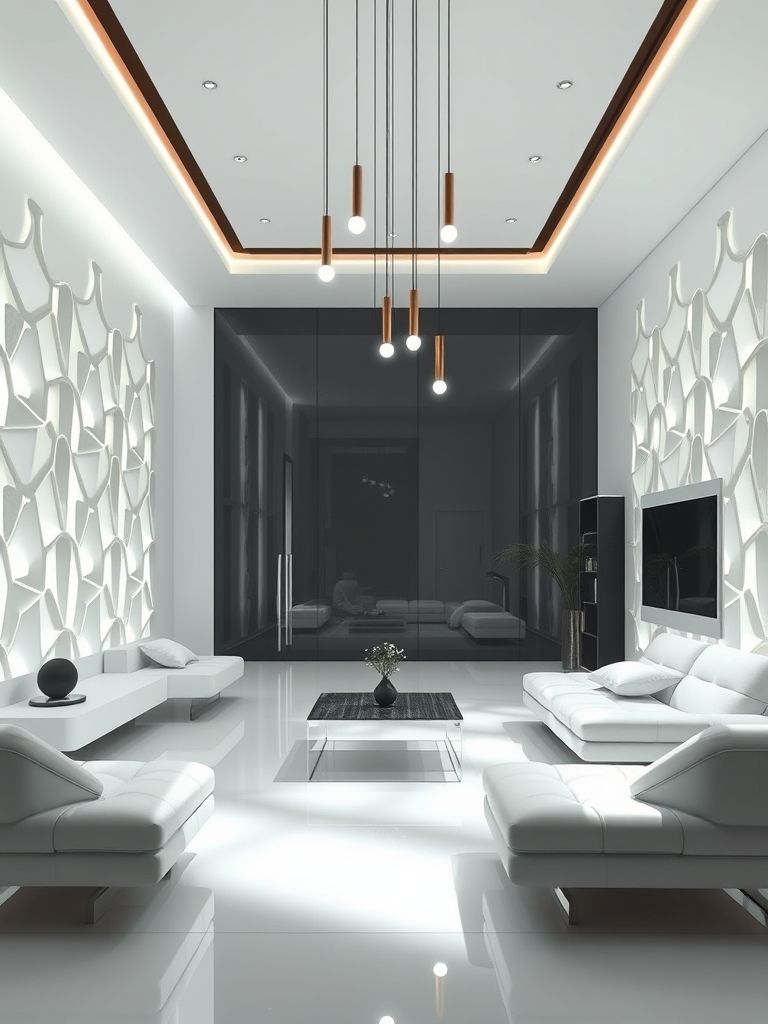
Glass Wall Clarity
This space was made for the light. A full-height glass wall opened up the living room to a sweeping garden view, but it did more than let the outdoors in—it turned the whole room into a canvas of light and shadow. As the sun moved, the mood changed. At noon, it glowed; at dusk, it whispered.
Furniture was sparse, intentionally so. A long white sofa framed the view without stealing the scene. A single black chair provided contrast, positioned like it had a front-row ticket to nature’s show. The coffee table was glass, of course—no need to block the light.
What struck me most was how little it took to make this room feel alive. The reflections, the shifting colors, the natural rhythm—it all happened through the glass. The architecture stepped back. The view spoke.
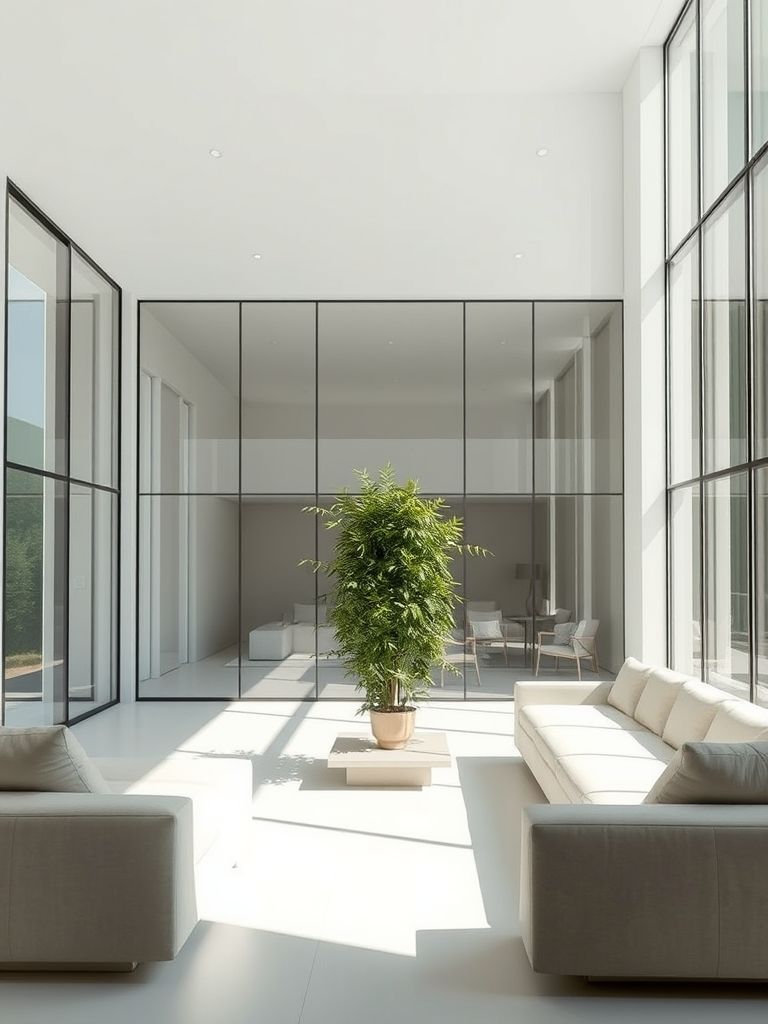
Hidden Function Living
You know those living rooms where nothing looks like what it is? This was one of them. Drawers were disguised as part of the wall. The coffee table doubled as a lift-top work desk. Even the TV—at first glance—was just a mirror. I kept discovering hidden details like I was solving a puzzle.
The space felt minimalist because there was no visible clutter. But everything you needed was tucked away smartly. A floor-to-ceiling unit looked like a solid wall until you pressed it—it swung open to reveal a tiny reading nook. Genius.
What I appreciated most was how the design never shouted, “Look how clever I am!” Instead, it quietly served the way people live today. Hide the mess, enjoy the calm. It was functional minimalism without the fuss.
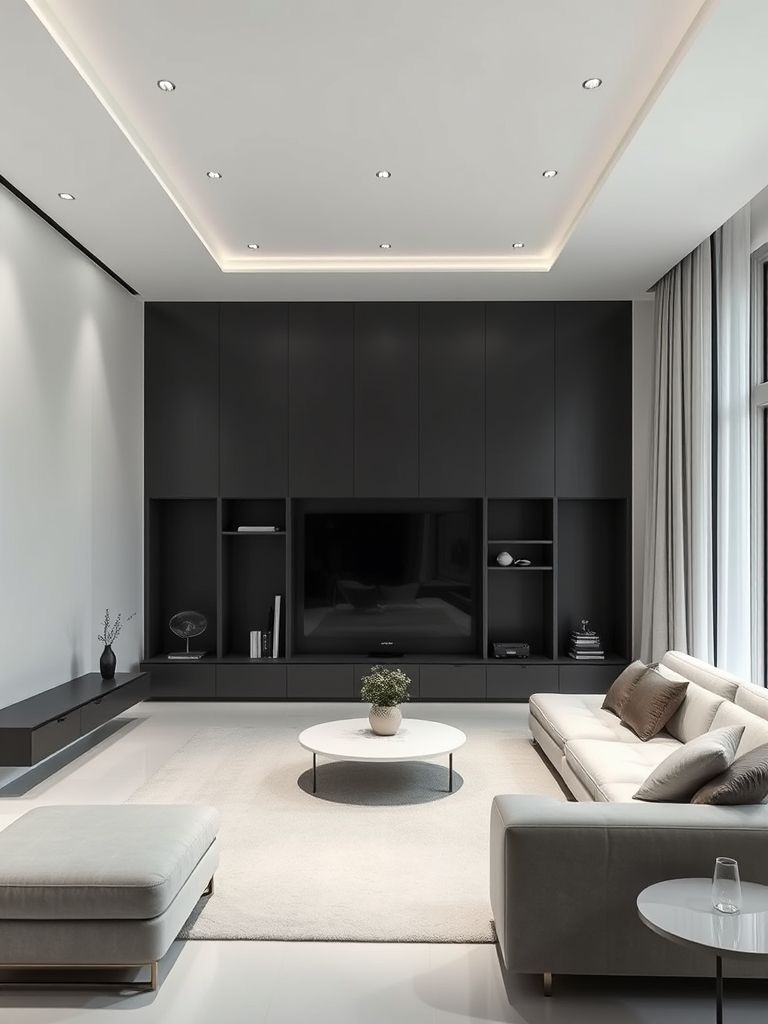
Minimalist with a View
There’s something poetic about designing a space that steps aside for the view. In this room, every piece of furniture was low-slung, pale in tone, and silent in form. Floor-to-ceiling windows framed a mountain range in the distance, and nothing—absolutely nothing—distracted from it.
The color palette was inspired by the landscape. Dusty beige, pale ash, and off-white fabrics mirrored the natural tones outside. I loved how the ceiling had a narrow beam that aligned perfectly with the horizon line—it guided your eyes right out the window.
There wasn’t much on the walls—just a subtle plaster texture. And yet, the room felt full. Full of quiet, full of space, full of view. It reminded me that sometimes the best part of a living room isn’t what’s inside—it’s what you get to see while sitting still.
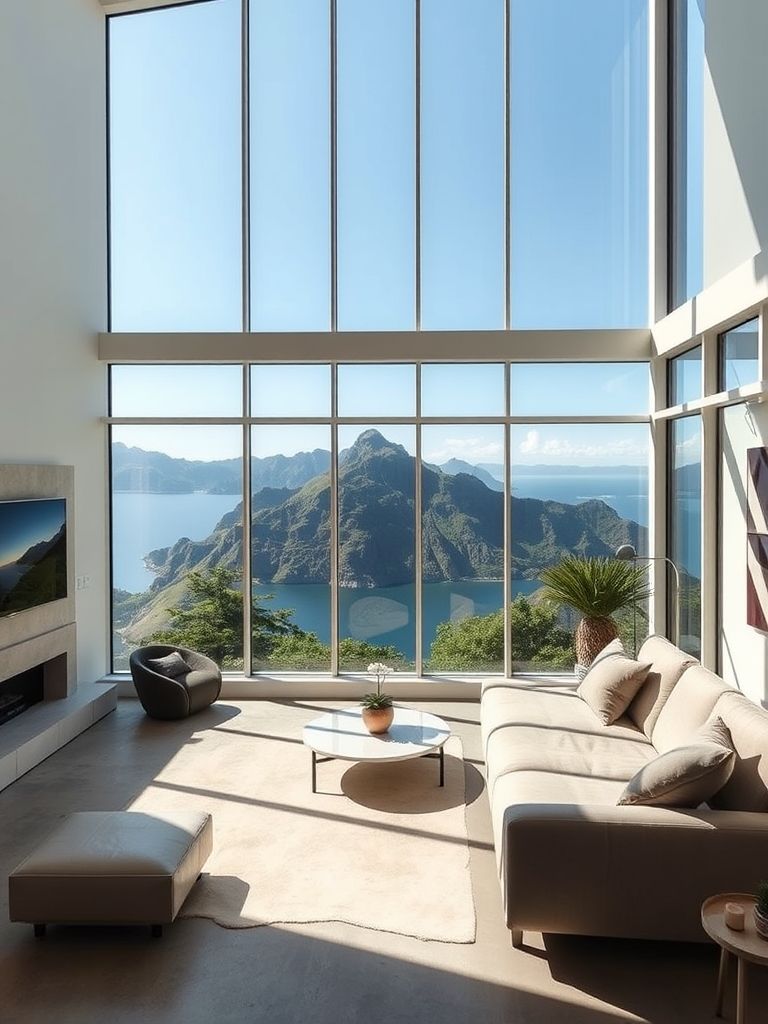
Monochrome Matte Living
This living room looked like it had been dipped in shadows. Every surface—from the walls to the furniture—wore a smooth, matte black or charcoal gray. At first glance, you’d think it might feel heavy or moody. But surprisingly, it felt calm. Calm in the way an empty theater does before the curtain rises.
I was struck by how soft everything appeared. The matte textures absorbed light rather than bouncing it back. It gave the space a quiet depth. The couch was oversized and armless, with thick cushions that looked like stone-carved foam. Even the lighting—low and recessed—felt like it had volume instead of shine.
Nothing here asked for attention. And maybe that’s why I stayed longer than usual. It was a room that felt like a whisper—not because it lacked design, but because it was designed to hush the outside world.
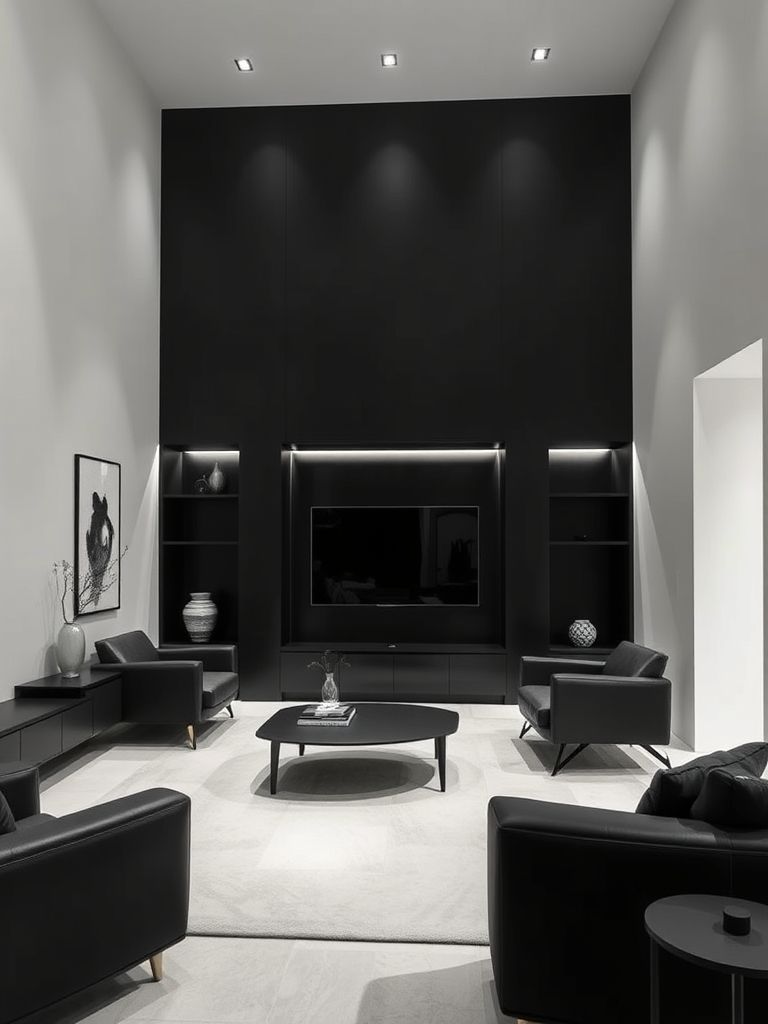
Muted Green Simplicity
This one felt like stepping into a foggy forest clearing. Everything was pale, mossy, or sage-toned, but not in an obvious botanical way. It wasn’t trying to be “green”—it just was. The walls carried a cool, dusty olive shade, while the sofa leaned into a gray-green upholstery that reminded me of eucalyptus leaves after rain.
There were almost no decorations—just a small, bare branch in a ceramic bowl and a linen throw folded neatly. It wasn’t trying to impress. It just gave space to breathe. I noticed how the room seemed cooler than others—like the colors brought the temperature down a few degrees.
The subtle greens didn’t shout “nature.” They just hinted at it, like the smell of wet earth. And that’s what made the room feel quietly alive. It wasn’t pretending to be outdoors—it simply mirrored it.
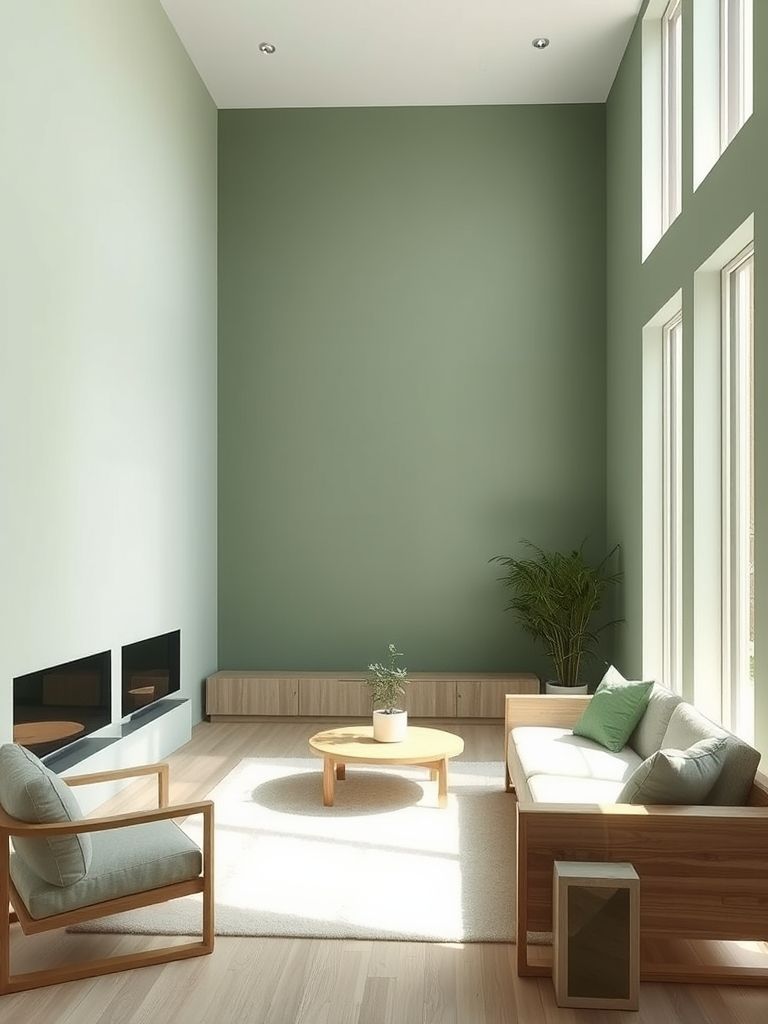
Neutral Contrast Harmony
This space was all about tone-on-tone play. Instead of jumping between dark and light, it stayed right in the middle—taupe, sand, cream, stone. But within that gentle range, it mixed textures like a recipe. Smooth stone beside coarse wool. Brushed brass next to linen. That’s where the contrast lived—not in color, but in touch.
There was a sculptural sofa, curved like a river pebble, and a round travertine table with a sandy finish. The rug underneath? Handwoven, with just enough unevenness to feel human. I appreciated how the materials did the talking here. No patterns. No logos. Just surfaces telling their own stories.
I remember sitting there and feeling a kind of ease. Nothing poked at the senses. Nothing overwhelmed. It was like every item had agreed to be part of something greater. And that harmony made the whole room sing softly.
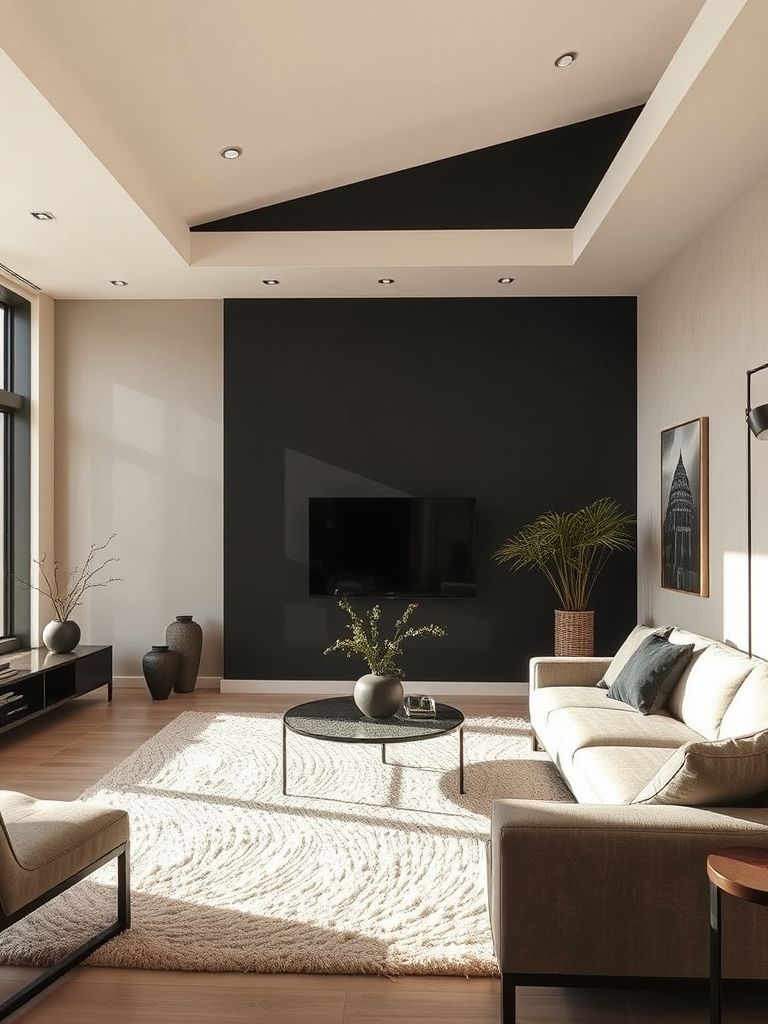
Open Concept Tranquility
Some spaces try to fill every corner. This one didn’t. Instead, it celebrated the negative space. The living room flowed freely into the dining and kitchen areas, all without walls or dividers. And yet, it didn’t feel exposed. It felt liberated. Each area had its moment without stepping on the next.
The palette helped—soft off-whites, ash wood, and pale concrete underfoot. Furniture floated in clusters: a two-piece couch with clean lines, a round wood coffee table, and a single chair that faced everything and nothing at once. Even the kitchen in the background kept to the script—flush cabinetry, no hardware, and silent color.
What made this space tranquil wasn’t the quiet—it was the air between things. The room didn’t beg for attention. It offered presence. Like a conversation where silence is welcome and pauses are allowed.
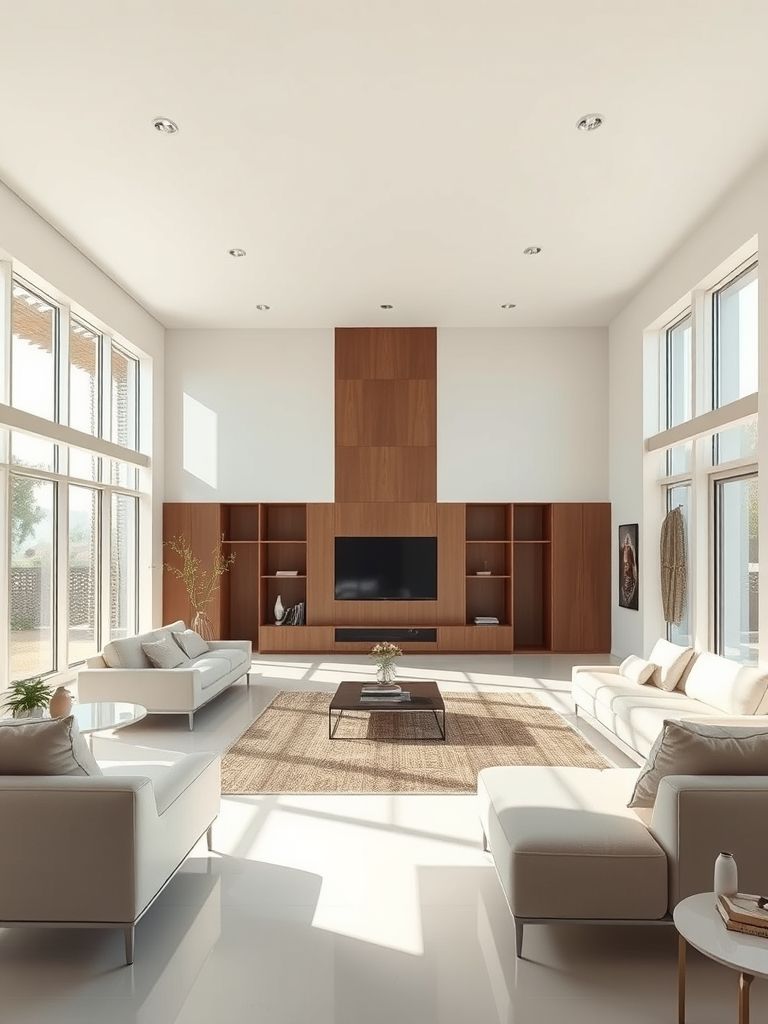
Scandinavian Lightness
I’ve seen a lot of Scandi-inspired rooms, but this one understood the assignment. It wasn’t about just adding light wood and white paint. It was about restraint, rhythm, and rhythm again. From the moment I entered, the room felt like a breath of fresh air. Clean, not cold. Simple, not sterile.
Light oak covered the floor and climbed halfway up the wall in vertical slats. The upper half was soft white, catching morning light just right. A low couch in a chalky fabric anchored the room, while a single fiddle-leaf fig in the corner reminded me that life doesn’t need clutter to thrive.
What really stood out was the ceiling—it had exposed beams in natural pine, and they echoed the floor rhythm. That balance, that echo, gave the room a soft heartbeat. It made me want to stay, sip coffee, and let the day begin gently.

Stone & Silence
This living room felt like a monastery—not in austerity, but in its sacred quiet. Every element—walls, floor, and furniture—was either stone or stone-inspired. Cool to the touch, weighty in presence. The palette ranged from limestone beige to slate gray, and yet it didn’t feel cold. It felt grounded. Ancient, almost.
The focal point was a monolithic bench-style coffee table made from a single slab of basalt. No polish, no veneer—just raw stone texture under your palms. Around it, a pair of low armchairs in off-white boucle softened the space. Light came from above through a narrow skylight, changing slowly throughout the day.
There was no need for art. The walls told their own story. The silence in the room wasn’t empty—it was meditative. It invited stillness in a world that rarely pauses. I found myself whispering without meaning to.
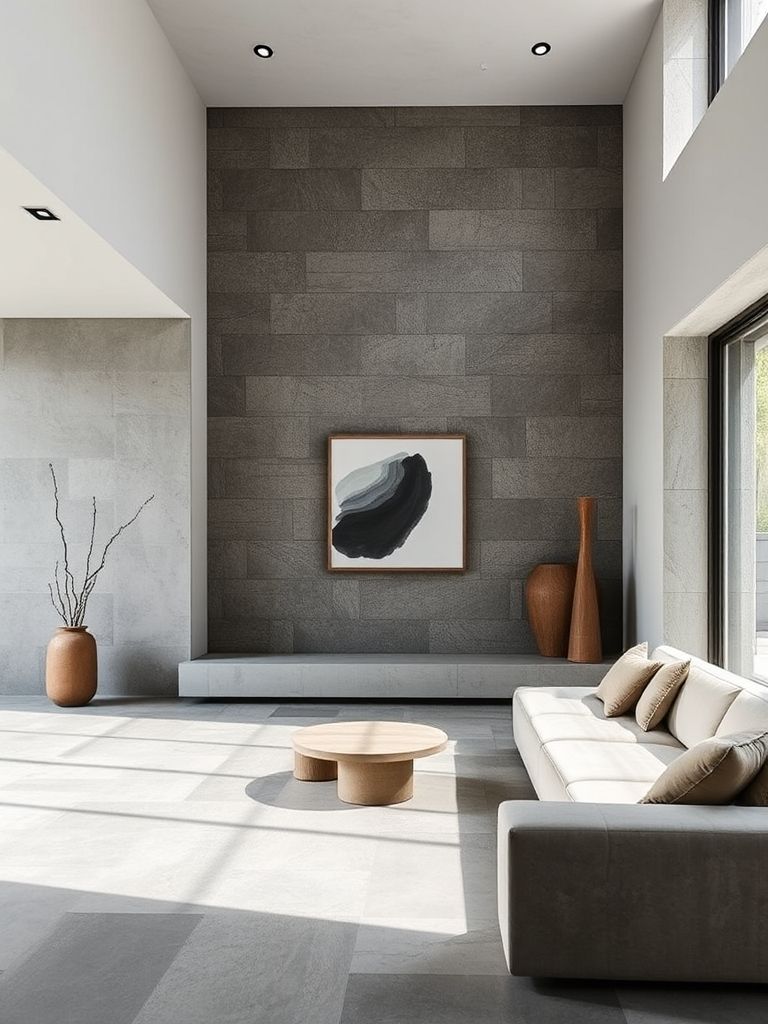
Textural Monotone Space
At first glance, this room looked like it had only one color—off-white. But as I moved through it, I realized it was a symphony of textures all within the same tone. There was boucle, brushed plaster, nubby linen, unglazed ceramic. Every surface whispered a different kind of softness.
The layout was simple: a modular couch in creamy fabric, a low ottoman that doubled as a table, and layered rugs stacked imperfectly on top of each other. The light bounced gently, never sharply. Nothing glossy, nothing sharp-edged. Just layers upon layers of quiet texture.
I ran my hand across the wall and felt the uneven grain of limewash. It reminded me that even monochrome can be rich—when it tells a story through feel, not color. This room didn’t need contrast. It found depth in touch.
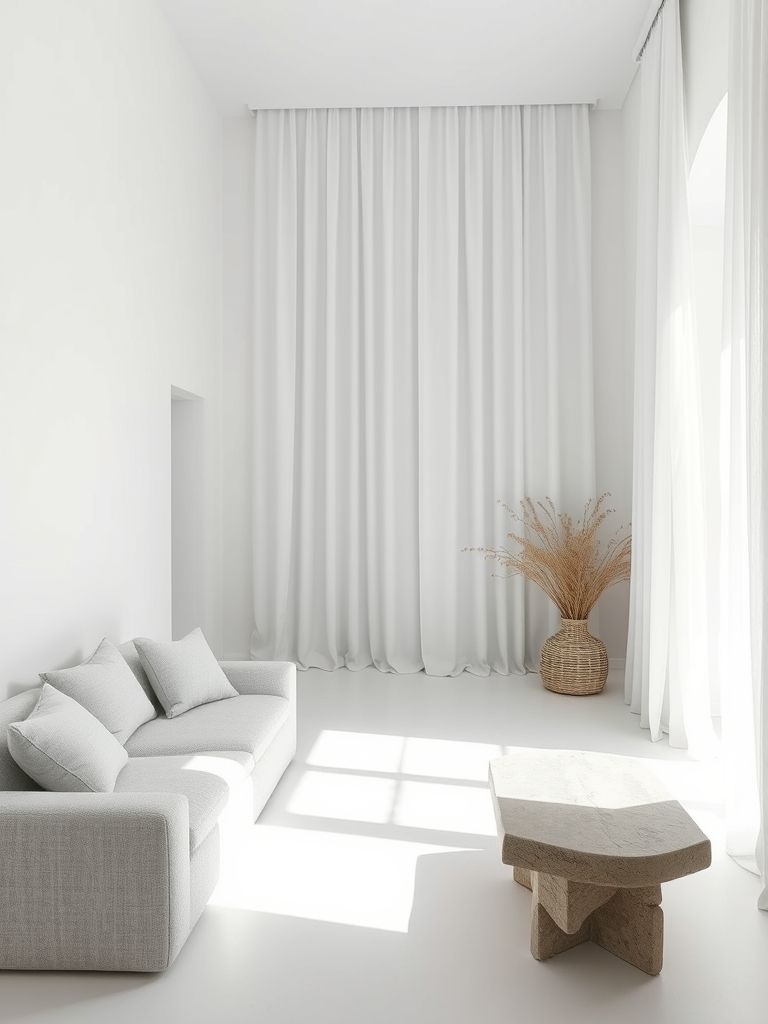
The One-Piece Focus
This space took minimalism to its boldest point—just one centerpiece in the entire room. One couch, custom-formed, stretching across the floor like a sculptural landscape. No coffee table. No side table. No distraction. It was as if the room revolved around this single decision.
The sofa itself was unlike anything I’d seen. Its curves rose and dipped like desert dunes, all wrapped in a clay-toned suede. It invited you to sit, lie, sprawl—whatever you needed. The floor was untouched pale concrete, and the walls bore only faint plaster swirls.
I stood there for a while, noticing how the absence of “things” made room for thought. The space didn’t feel empty—it felt focused. Like when someone pauses in conversation and you realize that silence was the whole point.
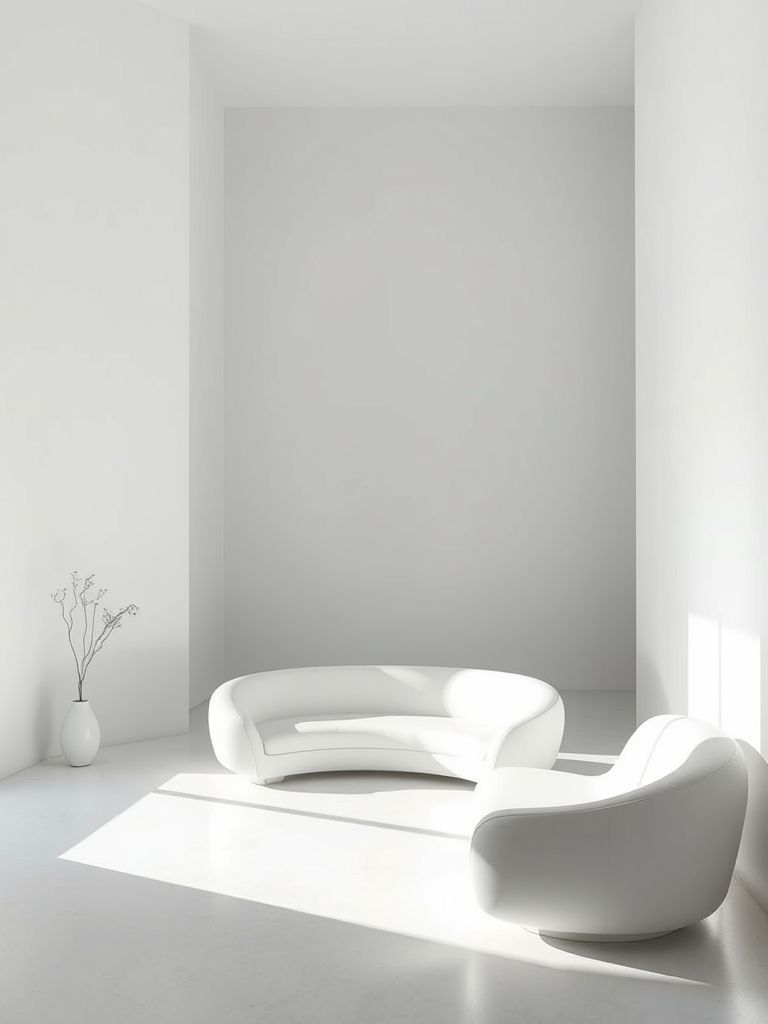
Wabi-Sabi Living
This room wore its imperfections with pride. Uneven walls, weathered wood beams, and handmade ceramic bowls made it clear: nothing was meant to be flawless. And somehow, that made it all feel more honest. More human.
A rough wooden bench sat under a paper lantern, casting warm light on the cracked floor tiles. The couch was patchy linen, with frayed edges and uneven stitching. A handwoven throw—clearly not machine-perfect—was draped across the seat, inviting touch.
There was a quiet beauty in how nothing matched. A stool with one leg shorter than the rest. A vase with a tiny chip on the rim. Yet it all belonged. Wabi-sabi didn’t ask for admiration—it offered acceptance. And I felt calmer because of it.
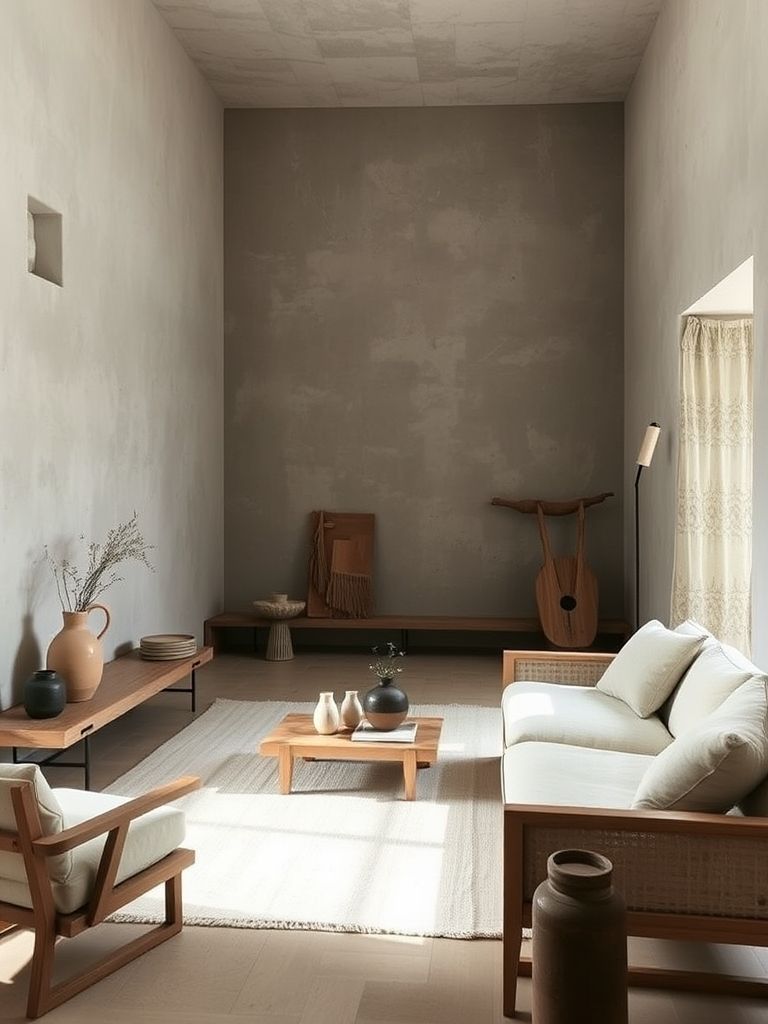
Zen White Serenity
This was the kind of space where you walk in and immediately lower your voice. Everything was white—not blinding white, but soft, feathered, calming white. The couch, the floor cushions, the walls, even the ceiling. But the magic wasn’t in the color. It was in how it made you feel.
The air felt still. Light filtered through sheer curtains like morning fog. There was a low square table in the center with nothing on it but a single white bowl. No patterns. No art. No distractions. Just breath.
I found myself walking slower here. Sitting longer. Thinking less. The room didn’t offer stimulation—it offered surrender. Zen white serenity isn’t about being blank. It’s about being clear. And in this room, I felt like my thoughts had finally quieted down.

Final Reflections on Living with Less
After spending time in all 20 of these minimalist living rooms, one thing stood out to me: simplicity isn’t about subtraction—it’s about intention. Each of these spaces told a different story, but they all respected space, silence, and stillness. They weren’t empty. They were considered.
Minimalism doesn’t mean giving things up. It means choosing what stays. Whether it’s a floating couch, a slab of stone, or a chipped vase, these rooms made room for clarity. They reminded me that good design doesn’t always need more—it needs meaning.
And maybe that’s the real beauty of living with less. When we strip away the noise, we finally get to hear what matters.


